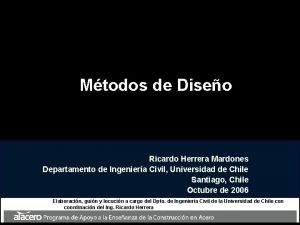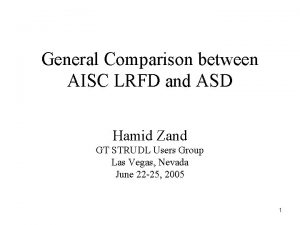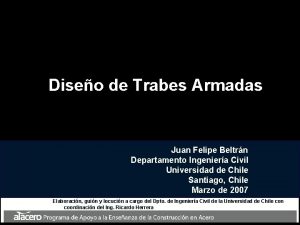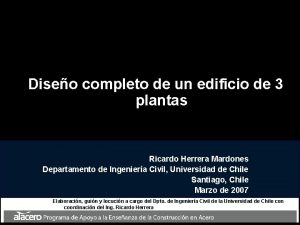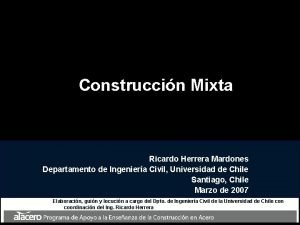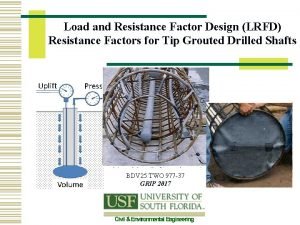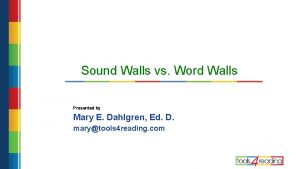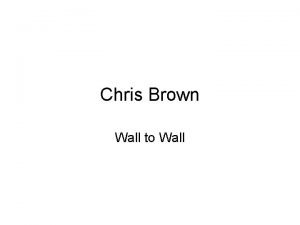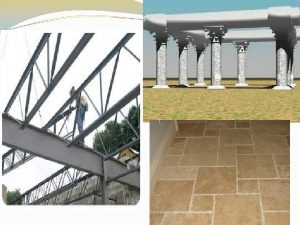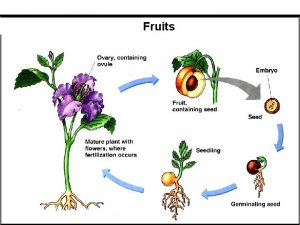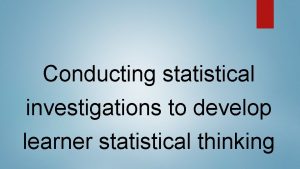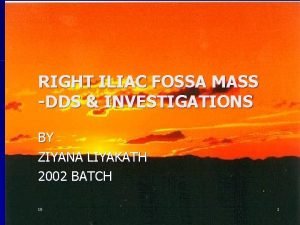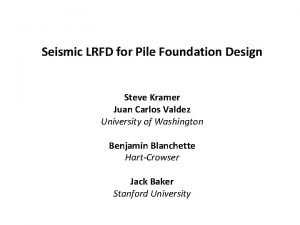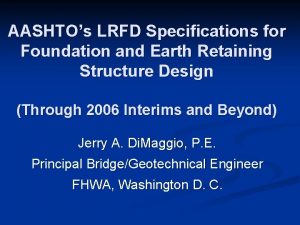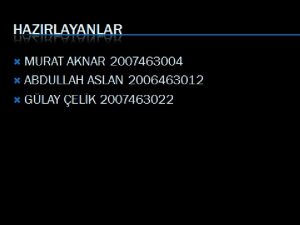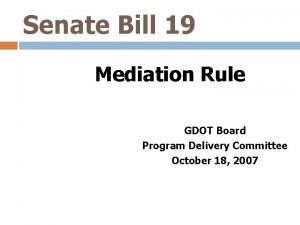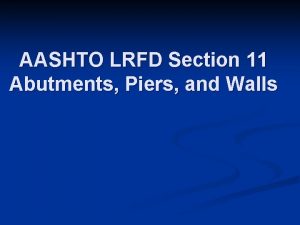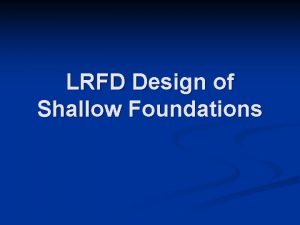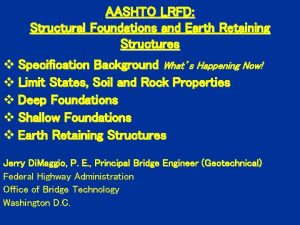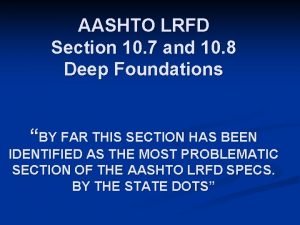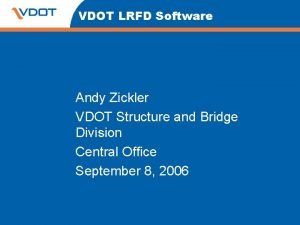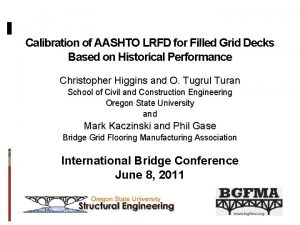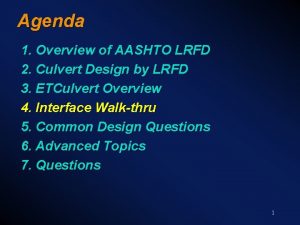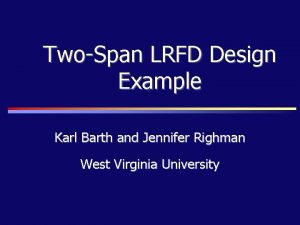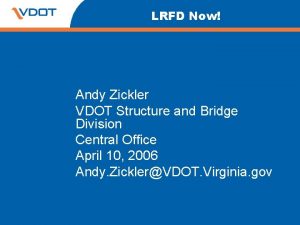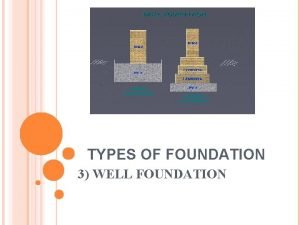GDOT Approach to Wall Foundation Investigations LRFD Methodology


























- Slides: 26

GDOT Approach to Wall Foundation Investigations LRFD Methodology Adebola Adelakun, E. I. T. , MSCE

Presentation Outline • History • GDOT Approach Phase 1 - Soil Parameters Phase 2 - WFI Analysis • Report Recommendation

History • Allowable Stress Design (ASD) was used generally in the US for foundation design • Work began on developing Load and Resistance Factor Design (LRFD) in 1989 • In 1994, AASHTO approved LRFD spec. for use

History Cont’d • In 2000, FHWA required all DOTs to design structures in LRFD for PE authorized projects let after October 1, 2007, or provide justification and a timeline • GDOT first developed an LRFD process for deep foundations, and subsequently a process for shallow foundations

GDOT Approach Phase 1 - Foundation & Retained Soil Parameters Wall Envelope Geotechnical Investigation Boring Logs Soil Parameters Phase 2 – WFI Analysis and Report Foundation Design Data Factored Bearing Resistance Analysis Settlement Analysis Differential Settlement Analysis WFI Report

Phase 1 – Wall Envelope The WFI process starts with receiving a Wall Envelope from the Bridge Office

Phase 1 – Geotechnical Investigation • Drilling • Soil/Rock Sample Examination • Lab Tests

Phase 1 - Boring Logs

Phase 1 – Wall Soil Parameters Foundation & Retained Soil Parameter Letter • We determine soil parameters based on the following: – Geotechnical investigation/geology – Finished boring logs – Shallow Foundations LRFD Spreadsheet • A letter to the bridge office stating the following soil parameters (for foundation & retained soil): – Soil Unit Weight – Internal Friction Angle – Cohesion (Usually Zero)

Soil Parameter Calculations

End of Phase 1

Phase 2

Phase 2 – WFI Analysis and Report Foundation Design Data Letter received from Bridge Office contains: • Wall Heights • Base Width/Strap Lengths (MSE Walls) • Bearing Pressure (Strength and Service Limit States) • Effective Base Width/Strap Lengths (Strength and Service Limit States) – due to “eccentricity”


Divide Wall into Height Sections

“Input” Tab on Spreadsheet Perform analysis per ‘wall height’ section Enter: • Project info • GWT (boring log) and Energy Rating (from Driller) • Footing length (from wall envelope) • Footing width (from fdtn design data letter) • Specific settlement values (start w/ 0. 5 in increments) • Footing input parameters • Boring log (when you have multiple logs, use log closest to current wall section being analyzed)

Sample Energy Rating Submittal

Footing Input Parameters • • Embedment Depth, Df (ft) Footing Thickness, t (ft) Layer Thickness, H (ft) Elastic Modulus of Foundation Material, Efdtn (ksf) – 600, 000 for Concrete or 4000 for MSE Wall Backfill

Clay Soils

Phase 2 – WFI Analysis and Report •

Phase 2 – WFI Analysis and Report •

Output • The 30 feet high Wall Section has a 21 feet Footing Width (Strap Length) • The bearing pressure (strength) for this wall section is 7. 91 ksf • After analysis, the graph is showing that if we control for 8 inches of settlement, we will get 8. 06 ksf in bearing resistance (> 7. 91, so its ok)

Phase 2 – WFI Analysis and Report Differential Settlement Analysis (C 11. 10. 4. 1 -1 & C 11. 6. 2. 2) • The ratio of the difference in settlement of adjacent wall sections and their horizontal distance • Purpose is to avoid overstressing the wall - a section of wall could potentially cause other sections or the entire wall system to fail • Limit for MSE Walls is 1/100 (<0. 01) • Limit for Conventional Retaining walls is 1/1000 (<0. 001)

Differential Settlement Check

WFI Report Recommendation

The End Any Questions?
 Gdot
Gdot Lrfd
Lrfd Asd vs lrfd
Asd vs lrfd Trabes armadas
Trabes armadas Lrfd
Lrfd Lrfd
Lrfd Load and resistance factor design
Load and resistance factor design Word wall vs sound wall
Word wall vs sound wall Chris brown wall
Chris brown wall Flemish bond t junction
Flemish bond t junction Members used to carry wall loads over wall openings
Members used to carry wall loads over wall openings Pod fruit develops from
Pod fruit develops from Pad foundation section
Pad foundation section Foundation standard 1 academic foundation
Foundation standard 1 academic foundation Why aren t descriptive investigations repeatable
Why aren t descriptive investigations repeatable Year 6 maths investigations
Year 6 maths investigations Private investigator craigslist
Private investigator craigslist Guide to computer forensics and investigations
Guide to computer forensics and investigations Numerical datum crossword puzzle clue
Numerical datum crossword puzzle clue Types of statistical investigation
Types of statistical investigation Forensic science fundamentals and investigations chapter 6
Forensic science fundamentals and investigations chapter 6 Bmv hours heatherdowns
Bmv hours heatherdowns The scientific method conclusion
The scientific method conclusion Child protective investigations pasco county
Child protective investigations pasco county Chs investigations
Chs investigations Forensics
Forensics Iliac region
Iliac region

